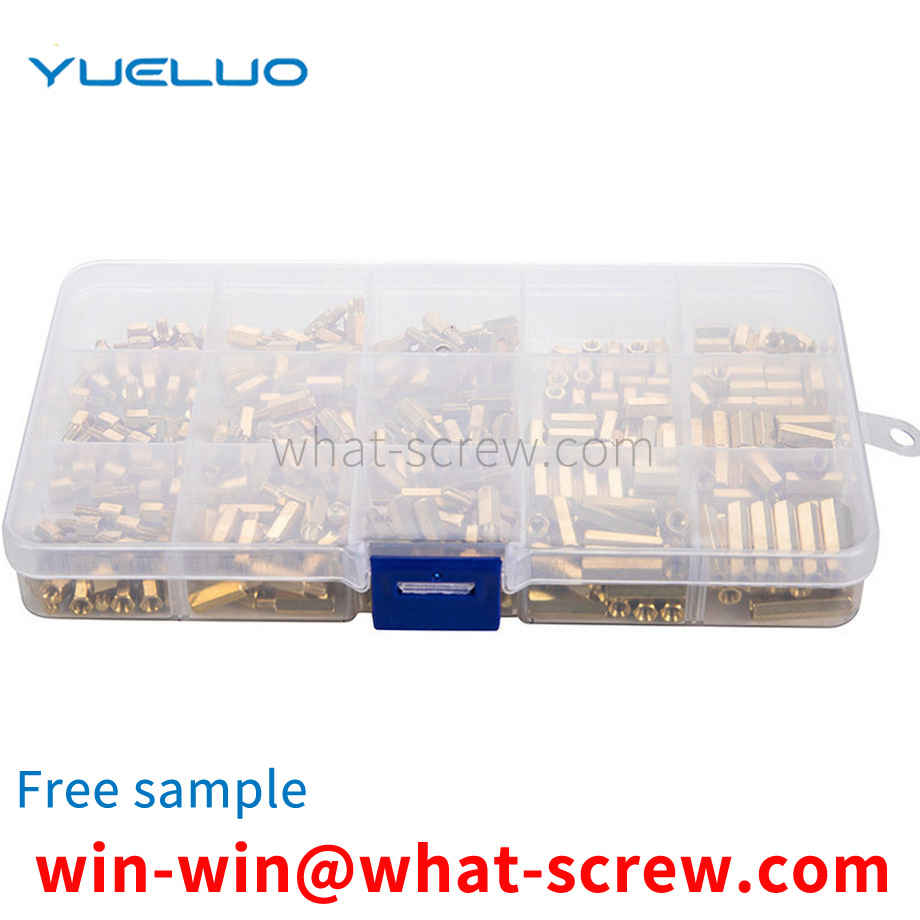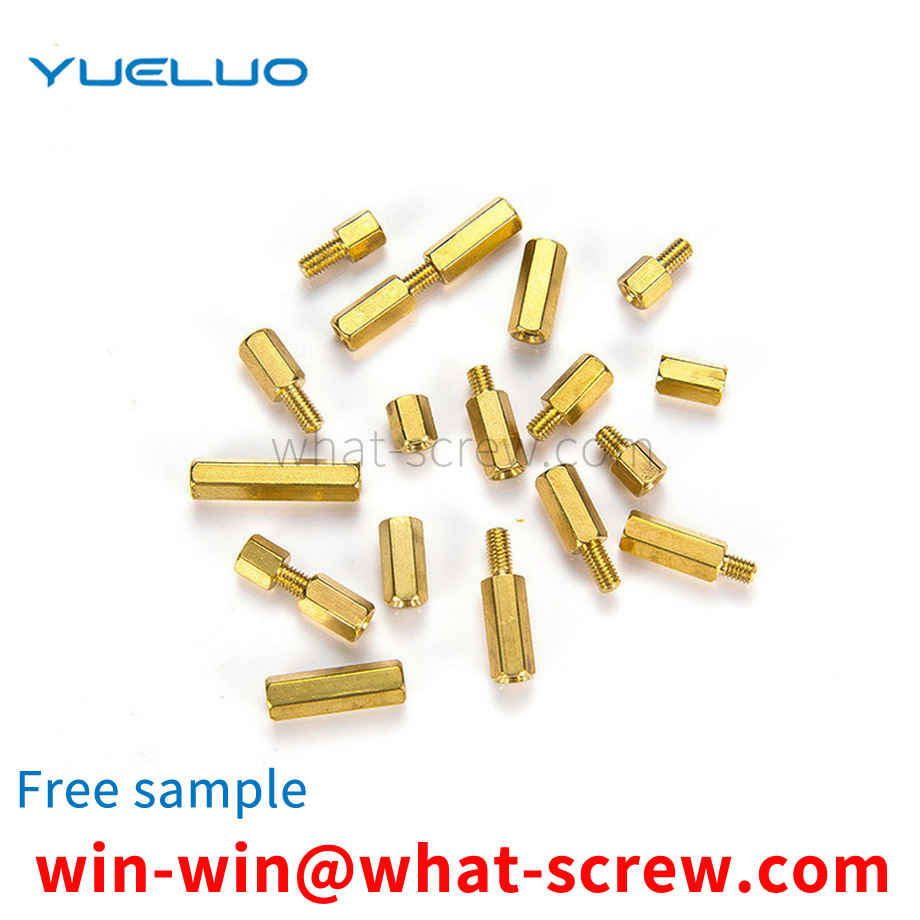With the continuous strengthening of infrastructure construction, the continuous increase of construction scale and the complexity of construction, the particularity of the requirements for construction equipment, materials, tools and equipment is also getting higher and higher, such as buildings, power stations, railway tunnels The channel steel used in these special construction environments requires the use of a special bolt, which must be easy to put in, easy to use
Bolt: A type of fastener consisting of a head and a screw (a cylinder with an external thread), which needs to be matched with a nut to fasten and connect two parts with through holes. This form of connection is called a bolted connection. If the nut is unscrewed from the bolt, the two parts can be separated, so the bolt connection is a detachable connection. [1] Stud: A type of fastener that has no head and only has external threads on both ends. When connecting, one end of it must be screwed into the part with the internal threaded hole, the other end must pass through the part with the through hole, and then the nut must be screwed on, even if the two parts are tightly connected as a whole. This form of connection is called a stud connection, which is also a detachable connection. It is mainly used for occasions where one of the connected parts is thick, requires a compact structure, or is not suitable for bolt connection due to frequent disassembly. [1] Screw: It is also a type of fastener consisting of a head and a screw. It can be divided into three categories according to the purpose: machine screws, set screws and special-purpose screws. Machine screws are mainly used for a fastened connection between a part with a fixed threaded hole and a part with a through hole, without the need for nut matching (this connection form is called screw connection, which is also a detachable connection; it can also be Cooperate with the nut, it is used for the fast connection between two parts with through holes.) The set screw is mainly used to fix the relative position between the two parts. Special purpose screws, such as eyebolts, are used for hoisting parts. [1] Nuts: with internal threaded holes, generally in the shape of a flat hexagonal column, but also in a flat square column or flat cylindrical shape, with bolts, studs or machine screws, used to fasten and connect two parts, make it a whole. [1] 5. Self-tapping screw: Similar to machine screw, but the thread on the screw is a special thread for self-tapping screw. It is used to fasten and connect two thin metal components to make them a whole. Small holes need to be made in advance on the components. Due to the high hardness of this kind of screw, it can be directly screwed into the hole of the component, so that the Forming a corresponding internal thread [1] 6. Wood screw: It is also similar to a machine screw, but the thread on the screw is a special thread for wood screws, which can be directly screwed into wooden components (or parts) to connect a band through The metal (or non-metallic) part of the hole is fastened to a wooden member. This connection is also a detachable connection. [1] 7. Washers: A type of fastener with an oblate annular shape. It is placed between the supporting surface of the bolt, screw or nut and the surface of the connecting part, which increases the contact surface area of the connected parts, reduces the pressure per unit area and protects the surface of the connected parts from damage; another type of elastic washer, It can also play a role in preventing the nut from loosening. [1] 8. Retaining ring: It is installed in the shaft groove or shaft hole groove of the machine and equipment, and plays the role of preventing the parts on the shaft or the hole from moving left and right. [1] 9. Pins: mainly used for positioning the left and right parts, and some are also used for connecting parts, fixing parts, transmitting power or locking fasteners. [1] 10. Rivet: A type of fastener consisting of a head and a shank, which is used to fasten and connect two parts (or components) with holes to make them a whole. This form of connection is called rivet connection, or riveting for short. It is a non-removable link. Because if the two parts joined together are separated, the rivets on the parts must be broken. [1] 11. Components and connection pairs: Assemblies are a type of fasteners supplied in combination, such as a combination of a certain machine screw (or bolt, self-supplied screw) and a flat washer (or spring washer, lock washer); Connection pair refers to a type of fastener that is supplied by a combination of special bolts, nuts and washers, such as high-strength hexagon head bolt connection pairs for steel structures. [1] 12. Welding nail: a heterogeneous fastener composed of a nail rod and a nail head (or no nail head), which is fixed to a part (or component) by welding, so as to be connected with other parts. .
Copper nuts, also known as embedded nuts and inlaid copper nuts or plastic embedded nuts, are divided into hot-melt copper nuts, hot-pressed copper nuts, embedded copper nuts and ultrasonic copper nuts according to different methods of use. This product is widely used in mobile phones. Shell / Pen meter shell / injection part / insert of plastic part, used as an internal thread. Generally embossed on the outer circle. To prevent sliding. Stainless Steel Nuts Hexagon Nuts (GB6170/DIN934), Thin Nuts (GB6172/DIN439), Heavy Nuts (Metric, US), Nylon Lock Nuts (DIN985-DIN982 Thick), All Metal Lock Nuts (DIN980M), Cap Nuts (DIN1587), Flange Nuts (GB6177/DIN6923), Flange Nuts Nylon Lock Nuts (DIN6926), Square Weld Nuts (DIN928), Hex Weld Nuts (DIN929), Butterfly Caps (GB62, DIN315, American), K cap, etc. Specifications: M1.6-M64
A screw is a tool that uses the physical and mathematical principles of the circular rotation and friction of an object to fasten the mechanism of the object step by step. A drill-tail screw is a screw with a self-tapping drill head on the front end of the screw. The screw is a common invention in people's production and life for thousands of years. According to the application field, it is the first invention of mankind. Drilling screw is a new invention in recent years, also called self-drilling screw. A screw is a common term for fasteners, an everyday colloquial language.
The anti-theft screw of this structure has two disadvantages. One is that the polygonal block moves up and down in the polygonal hole, and the polygonal hole in the connecting piece and the polygonal hole on the threaded part have no limit structure. Because of the polygonal structure, the two If the polygonal holes of the parts cannot be aligned, dislocation occurs, and any edge may block the up and down movement of the polygonal block, which is very unsmooth during use. The second is that the shell of the lock cylinder and the hexagonal part are connected by pins, and the pins are exposed on the hexagonal parts, which are easily damaged and leave opportunities for theft; once the pin is pried off, the lock cylinder will be taken out, and the entire anti-theft screw will be lost. and the pin fixation is sometimes unstable, which is detrimental to theft.
We have many years of experience in the production and sales of screws, nuts, flat washers, etc. The main products are: extended pull-out screws, extended screws, American nylon anti-loosening self-locking nuts, hexagonal screws and other products, we can provide you with suitable products for you fastener solutions.



















 Service Hotline
Service Hotline




